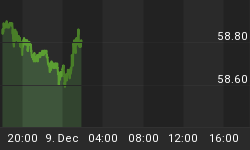Are potential Country and State defaults affecting the markets?
According to a unit of the CME Group this week, California was ranked as No. 10 of the Top 10 default candidates among sovereign debtors. Behind them was Greece. Their top 2 default candidates were Argentina and Venezuela.
Greece has been getting all the headlines lately, but there are other countries in trouble.
In Davos this week, the Bank of England estimated that governments around the world have spent or committed $14 trillion to prop up their financial systems since the fall of Lehman Brothers 2008. (Traders are buying protection against defaults on sovereign debt at more than 5 times the rate of company bonds.)
While it is not a hot topic in the media, global debt levels are now starting to be a risk element to the markets. When should such a problem put you on the alert? If you see debt-troubled countries starting to have difficulties raising capital, then that will be a red flag that could send shivers into the equity markets.
--- During our research, we found an unusual relationship between the U.S. equity markets and foreign country credit worthiness spreads. The contract spreads have to do with credit data that also includes bankruptcy and payment defaults. To explore this relationship, we had to look at certain future contracts relative to the trending of the NYA Index (NYSE).
Below is a chart showing the contract spreads from two different periods of time relative to forward looking futures. I drew lines where the two intersect indicating a shift between the future spreads. That line was then drawn up through the NYA Index to see the correlation. You can see the correlation for yourself by looking at the chart. The correlation is too close for it to be ignored. The mind boggler for us was that this data has nothing to do with equity markets, but instead, it has to do with the soundness of the credit worthiness of foreign countries. See the next chart ...

This chart shows the current (January 27th.) future contract spread relationship relative to the NYA Index. Note that the recent drop last week correlates with a cross over on the contract spreads.
You have to asks yourself, "Why would credit data spreads that incorporate international bankruptcy and payment defaults correlate so well with the U.S. equity markets???
This is suggesting that foreign country risks and potential defaults have now become an important investment criteria and factor for the big Wall Street firms in their program trading.

















